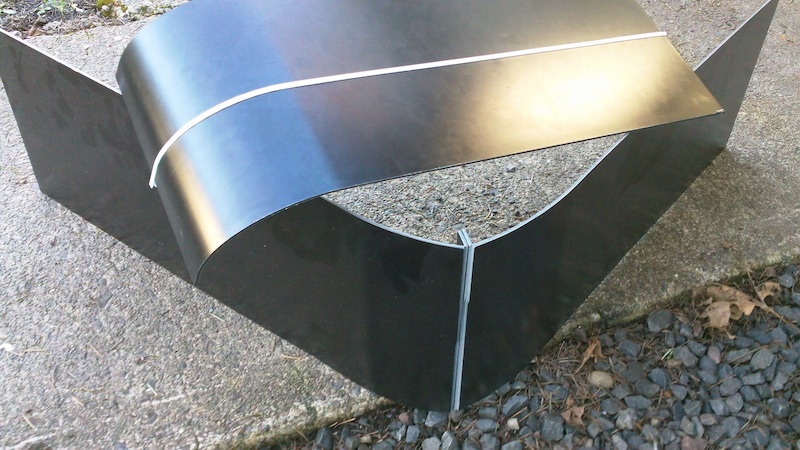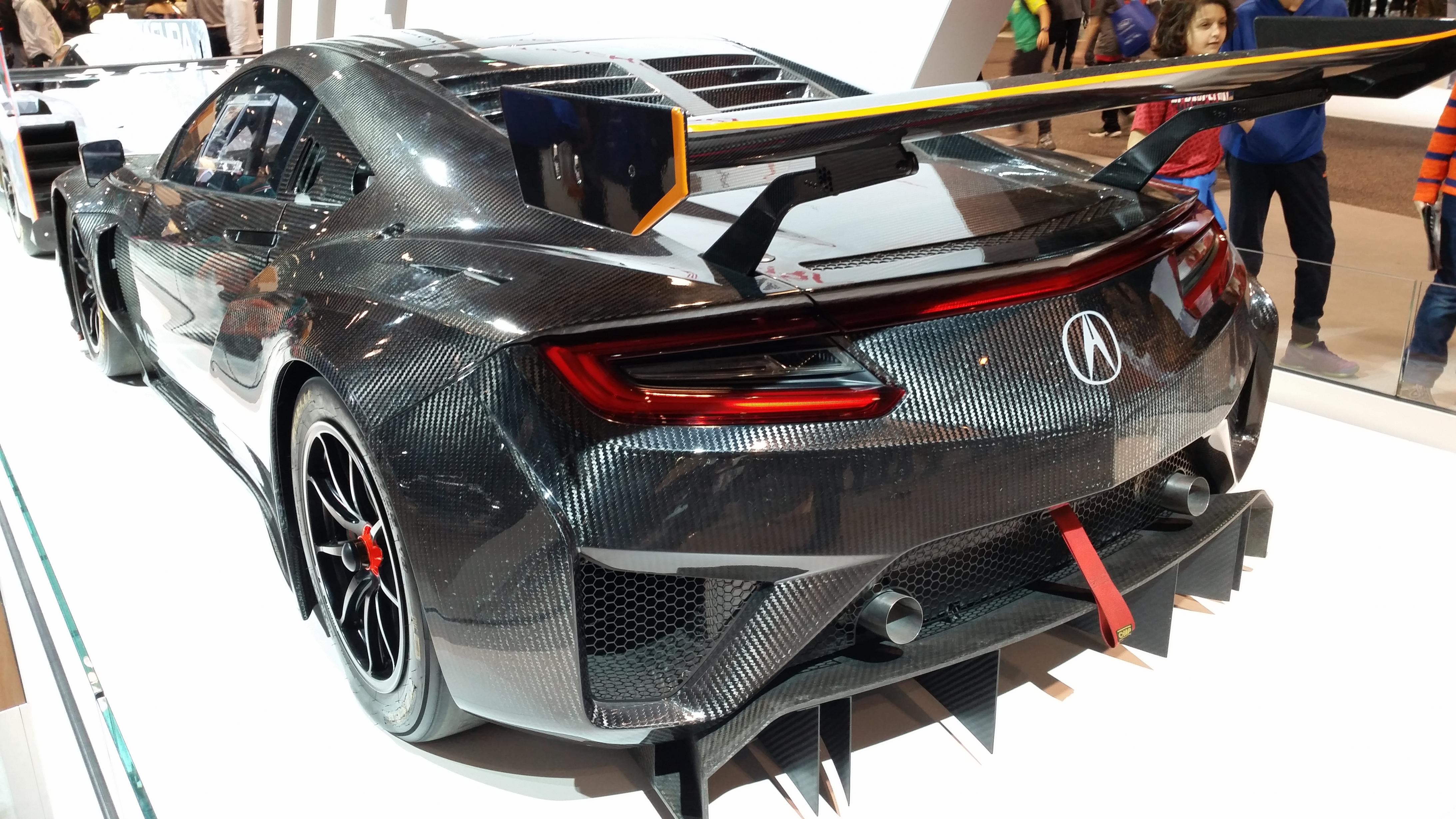 02-20-2018, 04:15 PM
02-20-2018, 04:15 PM
|
#31 (permalink)
|
|
Banned
Join Date: Feb 2018
Location: Brazil
Posts: 1,476
Thanks: 14
Thanked 363 Times in 327 Posts
|
Kryptonite is the bad resin curing, the bad fiber orientations shape, bad project, poor layers... the high costs that lead manufactures to use a small amounts...
Quote:
Originally Posted by freebeard

Am I interpreting that correctly? 'Kryptonite' would be Polymetal:

It's prefinished. A 3mm sheet is equal to 5/8" plywood. (The same stuff that clad the Grenfell Tower.) |
Last edited by All Darc; 02-20-2018 at 04:23 PM..
|
|
|

|
 Today Today
|
|
|
|
 Other popular topics in this forum...
Other popular topics in this forum...
|
|
|
|
 02-20-2018, 04:30 PM
02-20-2018, 04:30 PM
|
#32 (permalink)
|
|
Human Environmentalist
Join Date: Aug 2010
Location: Oregon
Posts: 12,946
Thanks: 4,359
Thanked 4,515 Times in 3,473 Posts
|
Quote:
Originally Posted by All Darc

Once you are on the road, the weight it's not very important and aerodynamics it's the main issue. I totally agree with you, in these terms.
But once you are in a ascent/clive, the overal weight it's very important. And every time you need to desaccelerate and accelerate again, like driving in the city, weight became important.
I bet many people are doing carbon fiber in home, paying a ot, to get a poor finished product.
|
You have to look at how fuel is spent in each application. In automotive applications, most energy is spent overcoming aerodynamic drag. The amount spent accelerating mass is relatively small. I'm not saying weight reduction doesn't matter, only that it matters very little compared to other applications.
For rockets, most of the fuel is spent accelerating mass, therefore reducing mass is critical, and spending money on exotic lightweight materials is justified.
Shaving 50 lbs off of a vehicle doesn't much impact fuel economy.
I agree that home use and low grade consumer CF is not so good. This is why we don't see it commonly used. To do it right is expensive, and to do it wrong is pointless. |
|
|

|
 02-20-2018, 04:51 PM
02-20-2018, 04:51 PM
|
#33 (permalink)
|
|
Banned
Join Date: Feb 2018
Location: Brazil
Posts: 1,476
Thanks: 14
Thanked 363 Times in 327 Posts
|
What about solar photovoltais area in the upper surface, compared to two kinds aerodynamic values ?
I was wondering if, for example, a 0,05 drag with low area for solar cells, could be worse than a 0,1 or 0,12 drag vehicle with a huge area for solar cells.
I will make a drawing about a solar "Morelli" or "solar Aptera" I imagined.
Quote:
Originally Posted by redpoint5

You have to look at how fuel is spent in each application. In automotive applications, most energy is spent overcoming aerodynamic drag. The amount spent accelerating mass is relatively small. I'm not saying weight reduction doesn't matter, only that it matters very little compared to other applications.
For rockets, most of the fuel is spent accelerating mass, therefore reducing mass is critical, and spending money on exotic lightweight materials is justified.
Shaving 50 lbs off of a vehicle doesn't much impact fuel economy.
I agree that home use and low grade consumer CF is not so good. This is why we don't see it commonly used. To do it right is expensive, and to do it wrong is pointless.
|
|
|
|

|
 02-20-2018, 05:22 PM
02-20-2018, 05:22 PM
|
#34 (permalink)
|
|
Banned
Join Date: Feb 2018
Location: Brazil
Posts: 1,476
Thanks: 14
Thanked 363 Times in 327 Posts
|
Bambu it's a super wood, in ecologic terms. It grows super fast, grown super together (close each other) and it's very strong, much better than plywood.
There is some bambu boards used tom cut meat, really strong, made by many pieces of bamboo glued together in high pressure.
There are projects fo try crerate a MDF made of bambuu fibers.
Quote:
Originally Posted by freebeard

|
Last edited by All Darc; 02-20-2018 at 05:29 PM..
|
|
|

|
 02-20-2018, 05:55 PM
02-20-2018, 05:55 PM
|
#35 (permalink)
|
|
PSmodder lurker
Join Date: Jan 2009
Location: Chino
Posts: 1,605
Thanks: 26
Thanked 909 Times in 522 Posts
|
University of Maryland's engineering professors; Teng Li, a mechanical engineering professor and Liangbing Hu created a process to make wood stronger than titanium and metal alloys and it is six times lighter! The team modified the material and mechanical properties of natural wood to make it 10 times tougher and 11.5 times stronger. The process involves chemical and mechanical processing to alter the plant cell structures. Toughness refers to the durability of the material, whereas its strength depends on how much stress it can take. They see it a replacement in designing and manufacturing vehicles.
https://www.nature.com/articles/nature25476
https://www.engineering.com/Designer...-Titanium.aspx |
|
|

|
 02-20-2018, 06:05 PM
02-20-2018, 06:05 PM
|
#36 (permalink)
|
|
Human Environmentalist
Join Date: Aug 2010
Location: Oregon
Posts: 12,946
Thanks: 4,359
Thanked 4,515 Times in 3,473 Posts
|
Quote:
Originally Posted by All Darc

What about solar photovoltais area in the upper surface, compared to two kinds aerodynamic values ?
I was wondering if, for example, a 0,05 drag with low area for solar cells, could be worse than a 0,1 or 0,12 drag vehicle with a huge area for solar cells.
I will make a drawing about a solar "Morelli" or "solar Aptera" I imagined.
|
You would need to use a computer model to calculate the projected power increase vs the projected aerodynamic penalty, or create a scale model and test. Many variables involved.
My sense is that solar is useless on a vehicle. Under ideal conditions (pointed directly at sun and no clouds), there is 1kW of sun energy available for every 1m^2. You might get 25% of that in electricity, so 250 watts. That's roughly 1/3 of a horsepower (746 watts) for every square meter of direct sunlight.
The added weight, cost, and aerodynamic penalty for using solar cannot be offset by the meager output. |
|
|

|
 02-20-2018, 06:40 PM
02-20-2018, 06:40 PM
|
#37 (permalink)
|
|
Banned
Join Date: Feb 2018
Location: Brazil
Posts: 1,476
Thanks: 14
Thanked 363 Times in 327 Posts
|
https://youtu.be/-lI_0iIcmdU?t=370
Quote:
Originally Posted by botsapper

University of Maryland's engineering professors; Teng Li, a mechanical engineering professor and Liangbing Hu created a process to make wood stronger than titanium and metal alloys and it is six times lighter! The team modified the material and mechanical properties of natural wood to make it 10 times tougher and 11.5 times stronger. The process involves chemical and mechanical processing to alter the plant cell structures. Toughness refers to the durability of the material, whereas its strength depends on how much stress it can take. They see it a replacement in designing and manufacturing vehicles.
https://www.nature.com/articles/nature25476
https://www.engineering.com/Designer...-Titanium.aspx |
|
|
|

|
 02-20-2018, 07:27 PM
02-20-2018, 07:27 PM
|
#38 (permalink)
|
|
Banned
Join Date: Feb 2018
Location: Brazil
Posts: 1,476
Thanks: 14
Thanked 363 Times in 327 Posts
|
Supose you already have the drag for both. Drag, weight, power of electric motors, all for both.
A solar panel do not need to have the same power output as the power of the electric motor. With batteries you can store some energy everytime you park on sun or reduce speed a lot. On road in cruiser mode you only use a fraction of the power of electric motor, if have good aerdynamics and the road have no climb.
Solarworld No1, Morelli based, similar to Aptera, have a 1800W solar array, using 29% efficient solar cells.

Quote:
Originally Posted by redpoint5

You would need to use a computer model to calculate the projected power increase vs the projected aerodynamic penalty, or create a scale model and test. Many variables involved.
My sense is that solar is useless on a vehicle. Under ideal conditions (pointed directly at sun and no clouds), there is 1kW of sun energy available for every 1m^2. You might get 25% of that in electricity, so 250 watts. That's roughly 1/3 of a horsepower (746 watts) for every square meter of direct sunlight.
The added weight, cost, and aerodynamic penalty for using solar cannot be offset by the meager output.
|
Last edited by All Darc; 02-20-2018 at 07:35 PM..
|
|
|

|
 02-20-2018, 07:55 PM
02-20-2018, 07:55 PM
|
#39 (permalink)
|
|
Human Environmentalist
Join Date: Aug 2010
Location: Oregon
Posts: 12,946
Thanks: 4,359
Thanked 4,515 Times in 3,473 Posts
|
Quote:
Originally Posted by All Darc

Supose you already have the drag for both. Drag, weight, power of electric motors, all for both.
A solar panel do not need to have the same power output as the power of the electric motor. With batteries you can store some energy everytime you park on sun or reduce speed a lot. On road in cruiser mode you only use a fraction of the power of electric motor, if have good aerdynamics and the road have no climb.
Solarworld No1, Morelli based, similar to Aptera, have a 1800W solar array, using 29% efficient solar cells.
 |
Yes, it's very neat as an engineering feat, but not practical or applicable to consumer vehicles. 1800W is only 2.4 horsepower, which might drive that car at 55 MPH under ideal conditions. Even if the car were left in the sun to charge, 1.8 kWh is a very low rate.
Vehicles are among the worst place for solar panels. Much better to put them on a roof and angle them to be efficient.
|
|
|

|
 02-20-2018, 08:07 PM
02-20-2018, 08:07 PM
|
#40 (permalink)
|
|
Moderator
Join Date: Feb 2012
Location: Urbana, IL
Posts: 1,939
Thanks: 199
Thanked 1,807 Times in 943 Posts
|
All this talk about carbon fiber reminded of this car, photographed yesterday at the Chicago Auto Show:

|
|
|

|
|